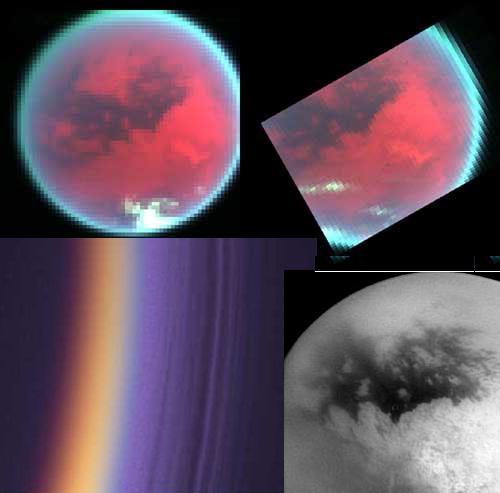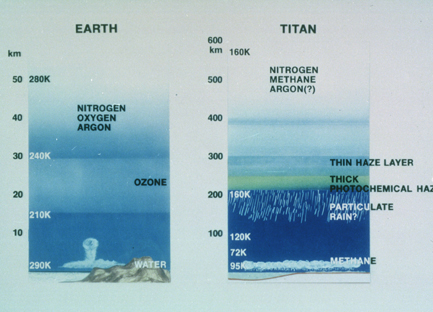The Cassini spacecraft has for the first time photographed changes in weather patterns on Saturn's largest moon, Titan
By: Nir Stav, a window site for physics

The Cassini spacecraft has for the first time photographed changes in weather patterns on Saturn's largest moon, Titan. On 13/12 it passed at a distance of about 200,000 km from the surface, roughly the same distance it passed in its first close encounter with it, at the end of October. Comparing the two images (December - on the right, October - on the left) clearly shows that the cloud cover changes its amount and location.
These images are not images in visible light - Titan is surrounded by a heavy haze that causes very high atmospheric turbidity in visible light and does not allow a peek inside. In its last visit near Titan, last week, Cassini was able to show that it is not a uniform haze layer but a large number of separate layers.
The photography is done in infrared, at different wavelengths: the color red
In the picture is the measurement of a detector at 2.01 microns, the green color is the measurement of a detector at 2.83 microns and the blue color is of a detector at 2.13 microns. That is, the shades of the images above are artificial and represent the depth of penetration into the atmosphere: radiation at 2.01 microns manages to reach the surface, radiation at 2.83 microns reaches the lower atmosphere, and radiation at 2.13 microns only penetrates the upper part of the atmosphere. Thus, the blue-green tones in this image indicate objects in the atmosphere (clouds) while the red-brown tones represent the surface (the color of the ground is probably not this shade).

The scientists are now looking forward to 14/1, the day when the Huygens probe will penetrate into Titan's atmosphere. Huygens, a sub-spacecraft about 3 meters in size, will be released from Cassini in about a week, on 25/12. The probe is equipped with equipment that will measure and photograph the atmosphere during penetration and the scientists hope that it will survive the dramatic event and will also be able to send images of the surface and settle a series of arguments - what are the dark and light areas that you see in the infrared images of the surface? What is the true color of the surface? Are there liquid oceans of ethane there? and more…
For information on the Nature website
A window site for physics
